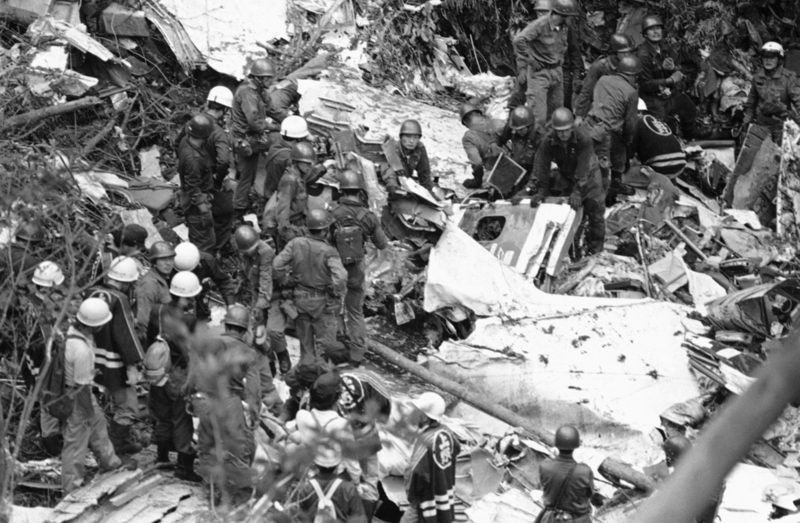|
Japan Airlines Flight 123, 520 dead and 4 survived |
 |
|
Soldiers and firemen sift through debris in search of possibly more survivors after they found three women alive under the big chunk of debris, shown at right, at the crash site of a Japan Air Lines Boeing 747 in Komoro, Japan, Aug 13, 1985. The search and rescue operation was launched at the daybreak when military and police officials finally pinned down the exact location of the night crash on Mount Osutaka, 70 miles northwest of Tokyo. [Photo/IC] |
On Aug 12, 1985, a Boeing 747 flying from Tokyo Haneda Airport to Osaka Itami Airport crashed into Mount Takamagahara in Ueno, Gunma prefecture, 100 km away from Tokyo, more than 40 minutes after take-off at 6:12 pm local time.
A total of 520 people died and four survived. It is the deadliest single-aircraft accident in history.
The plane went down because a piece of the aircraft, which had been poorly repaired after an incident seven years earlier, detached during the flight, ripping the vertical stabilizer and severing all four hydraulic systems.
It crashed after violently spiraling through the sky for 32 minutes - enough time for passengers to understand they were on their last flight, and to scribble their final messages.
The US Air Force controllers at Yokota Air Base situated near the plane's flight path had monitored the aircraft's calls for help. A C-130 helicopter was the first to spot the crash site 20 minutes after impact, while it was still daylight. The C-130 crew radioed Yokota Air Base, which then dispatched a Huey helicopter with night vision capability. Rescue teams were prepared to be lowered to the site.
However, the US offers of help to guide Japanese forces immediately to the crash site and of rescue assistance were rejected by Japanese officials, who ordered the US crew to keep away from the crash site, stating the Japan Self-Defense Forces would handle the entire rescue alone.
The decision of Japanese authorities aroused criticism as poor visibility and the difficult mountainous terrain delayed the operation, which may have resulted in crash survivors dying from shock or exposure overnight in the mountains.